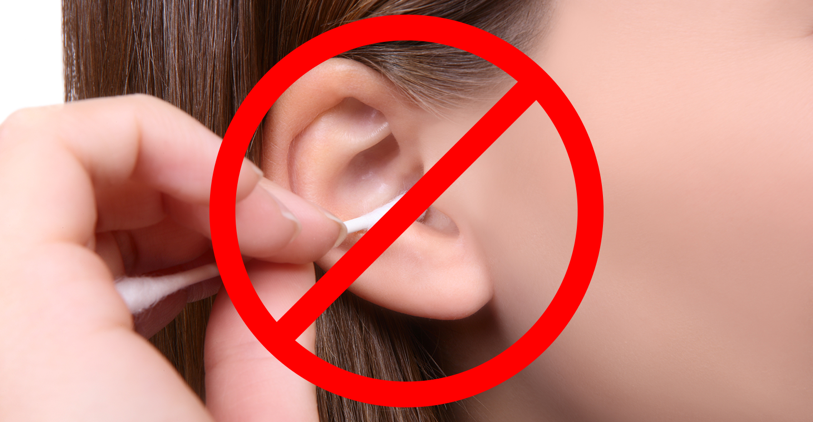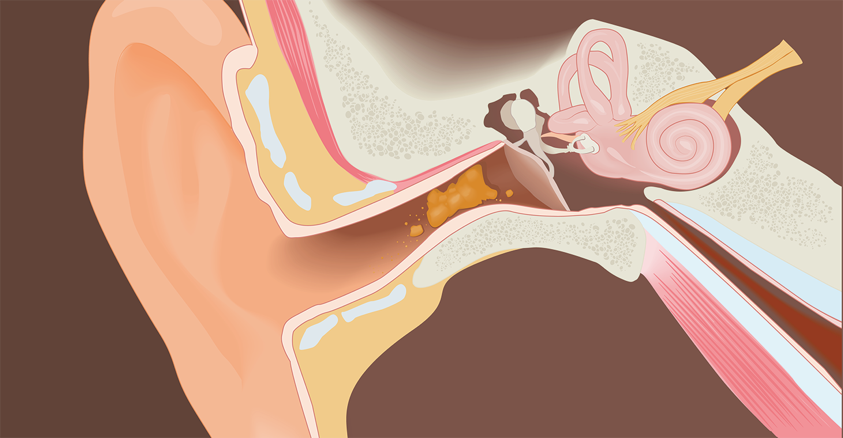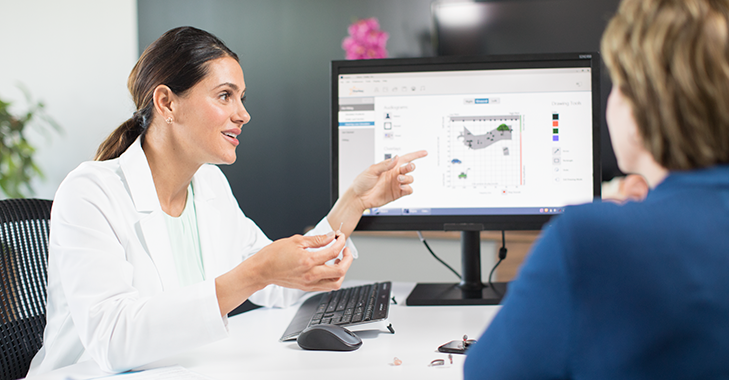Believe it or not, this is one of the most frequently asked questions and it's important to remember why we have earwax.
Cerumen, often referred to as earwax, is produced by the ear for several different reasons. It collects dirt, debris and bacteria, preventing unwanted foreign bodies from entering the ear. Earwax also has lubrication properties to keep the ears from getting dry and itchy. Finally, earwax acts as an antifungal and antibacterial, helping to fight infections in and around our ears.
Your ears mostly clean themselves
Earwax usually works its way out of the ears naturally through normal jaw motions, such as talking and chewing. So most people rarely or never have to clean their ears above and beyond their normal bathing routine. After showering, simply wipe away excess water and any possible wax from your outer ear with a towel or wash cloth.

You should NOT use cotton swabs to clean your ears
There’s a saying in our field, “Never insert anything smaller than your elbow into your ear.” Cotton swabs can push the earwax deeper into the ear, causing an impaction and preventing the eardrum from vibrating properly. People who use cotton swabs to clean their ears usually end up making earwax worse, not better. The impaction can lead to bigger problems. Even brands such as Q-tips® have packaging warning against inserting them into the ear canal!
Wax buildup is a real thing
Everyone’s ear is uniquely shaped, so for some, normal cleaning methods are not effective enough and earwax can build up.
Symptoms of excess earwax include:
- Difficulty hearing
- Fullness or ringing in the ears
- Pain in the ear
- An odor coming from the ear
- Dizziness
People who wear hearing aids may be more susceptible to earwax buildup, as having a device in the ear can prevent earwax from naturally working its way out during the day. Also, earwax buildup is more common among older adults because the consistency of earwax changes with age.

How to get rid of excess earwax
If you think you have excess earwax, the safest thing to do is to visit your doctor or hearing professional. Your doctor can look into your ears to investigate the earwax and determine if it should be removed. If it needs to be removed, he or she can use water irrigation, suction or a curette to scoop out the earwax. Doctors may recommend patients return every six months or annually as a preventative measure against earwax buildup.
Other safe, at-home ear cleaning methods
If you choose to remove the earwax at home, there are a number of safe methods that can be used. Pharmacies and certain retail stores sell over-the-counter drops that soften earwax. Mineral oil and baby oil also do a nice job of softening earwax. If you have any specific questions about at-home ear cleaning contact our office and we can help determine what solutions might be the best fit.

Your hearing professional can always help
The best recommendation is to always consult with a hearing professional if you are concerned about earwax. It’s important to note that people who have diabetes, who are prone to ear infections, who might have a perforation in the eardrum, who have tubes, or who have compromised immune systems should exercise additional caution and consult with a professional before trying any treatment at home. If you have any questions, please contact our office today, we would love to help!
This blog was originally published on Starkey.com.
